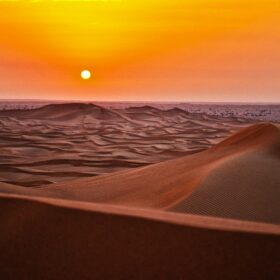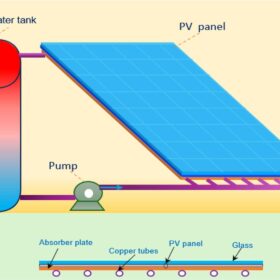Asymmetrical 49-level cascaded inverter for PV applications
Researchers in Iraq have designed a multi-level cascaded inverter that can purportedly produce high-quality sinusoidal output voltage and current waveforms, while reduing harmonic distortion. It uses the so-called phase disposition level-shifted pulse width modulation (PDLSPWM) control technique to operate the switches in the circuit “effectively.”
New algorithm for fault detection in renewables microgrids
An Iraqi-Canadian research team has created a new algorithm that can detect direction change in the line current of renewables-based microgrids. The novel approach can be applied to both grid-forming and grid-following infrastructures.
Why and where solar PV succeeded in Arab Gulf states
A US-UAE research team has investigated how regulatory regimes impacted solar power deployment across six Arab states of the Persian Gulf. Their findings show that the predominant role of the state is expected to continue.
Scientists use series active filter to improve power quality of grid-tied PV
Scientists in the Middle East have developed a series active filter to improve power quality in grid-tied PV systems, consisting of an inductor, two capacitors, and four transistor-diode pairs. The filter reduces total harmonic distortion in voltage and current waves at the inverter output.
Multiple designs of photovoltaic-thermal collectors
Scientists have modeled eight different kinds of PVT systems, some with a glass covers and some without. They found the worst efficiency was achieved in uncovered systems with parallel round tubes.
Coupling photovoltaics with waste-to-energy
Researchers have simulated the addition of PV plants and waste-to-energy systems in the Iraqi Al-Gharab region, that suffers from power cuts, and have identified the optimal size and locations for these hybrid plants, with the LCOE dropping by 7.7%.
Hydronic closed-loop cooling system for photovoltaic modules
An international research team has developed a closed-loop PV cooling system that can reportedly offer 24-hour continuous operation. The system is claimed to be particularly suitable for hot and arid regions and to improve the lifespan of solar panels by up to 8.2%.
k-Nearest Neighbors algorithm for PV power forecasting
Scientists in Iraq used a k-Nearest Neighbors algorithm to evaluate the operational status of PV modules under various conditions, including partial shading, open circuit, and short circuit scenarios. They found that the overall performance of the model in predicting power output was “notably accurate.”
Reducing PV module temperature with cooled air from the ground
Researchers from Iraq have used computational fluid dynamics to simulate the operation of a 100 W panel with ground cooling. The proposed technique was reportedly able to reduce panel temperature by up to 28%, with power generation increasing by up to 6.5%.
Reducing photovoltaic-thermal module temperature with iron, copper oxide
An international research team has proposed using iron oxide and copper oxide to lower photovoltaic-thermal (PVT) solar module temperature. Their analysis showed that the two compounds were able to lower the panels’ operating temperature by 23.49% and 34.58% respectively.










